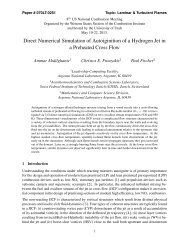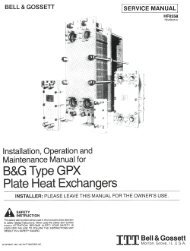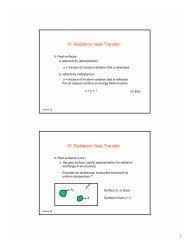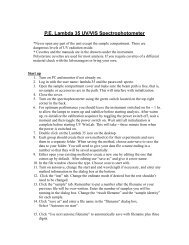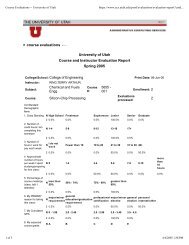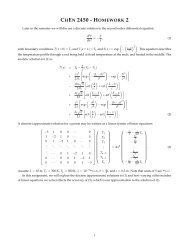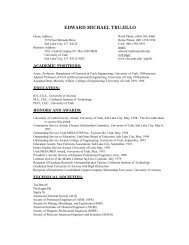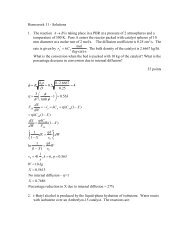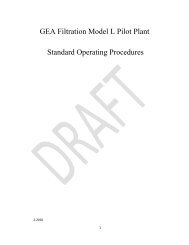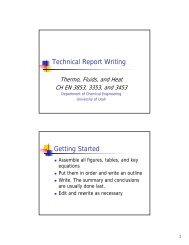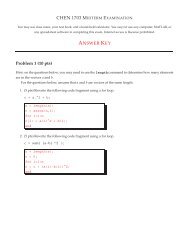HYDRA CELL Manuale Uso e Manutenzione ... - Asco Pompe Srl
HYDRA CELL Manuale Uso e Manutenzione ... - Asco Pompe Srl
HYDRA CELL Manuale Uso e Manutenzione ... - Asco Pompe Srl
- No tags were found...
You also want an ePaper? Increase the reach of your titles
YUMPU automatically turns print PDFs into web optimized ePapers that Google loves.
D/G-10 TroubleshootingCavitation• Inadequate fluid supply because:— Inlet line collapsed or clogged— Clogged line strainer— Inlet line too small or too long— Air leak in inlet line— Worn or damaged inlet hose— Suction line too long— Too many valves and elbows in inlet line• Fluid too hot for inlet suction piping system.• Air entrained in fluid piping system.• Aeration and turbulence in supply tank.• Inlet vacuum too high (refer to “Inlet Calculations”, page 3).Symptoms of Cavitation• Excessive pump valve noise• Premature failure of spring or retainer• Volume or pressure drop• Rough-running pump• Premature failure• Piston return spring failureDrop in Volume or PressureA drop in volume or pressure can be caused by one or more ofthe following:• Air leak in suction piping• Clogged suction line or suction strainer• Suction line inlet above fluid level in tank• Inadequate fluid supply• Pump not operating at proper RPM• Relief valve bypassing fluid• Worn pump valve parts• Foreign material in inlet or outlet valves• Loss of oil prime in cells because of low oil level• Ruptured diaphragm• Cavitation• Warped manifold from overpressurized system• O-rings forced out of their grooves from overpressurization• Air leak in suction line strainer or gasket• Cracked suction hose.• Empty supply tank• Excessive aeration and turbulence in supply tank• Worn and slipping drive belt(s)• Worn spray nozzle(s)• Cracked cylinder castingPump Runs Rough• Worn pump valves• Airlock in outlet system• Oil level low• Wrong weight of oil for cold operating temperatures (changeto lighter weight)• Cavitation• Air in suction line• Restriction in inlet/suction line• Hydraulic cells not primed after changing diaphragm• Foreign material in inlet or outlet valve• Damaged diaphragm• Fatigued or broken valve spring• Broken piston return springPremature Failure of Diaphragm• Frozen pump• Puncture by a foreign object• Elastomer incompatible with fluid being pumped• Pump running too fast• Excess pressure• Cavitation• Broken piston return spring (50)Water (or Process Fluid) in OilReservoir• Condensation• Ruptured diaphragm• Hydraulic cell not properly primed after diaphragmreplacement• Frozen pump• Diapragm screw O-ring (18) missing or cracked• Cracked cylinder casting18 D10-991-2400 5/1/04



